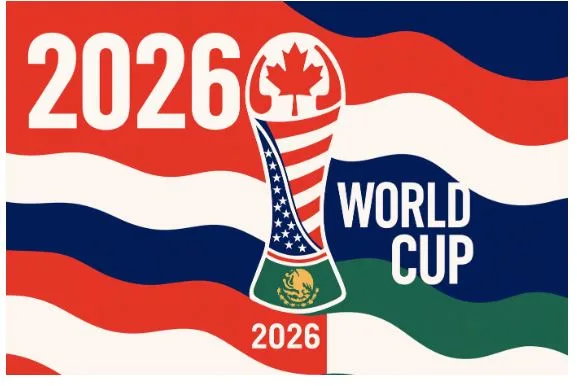How the FIFA World Cup 2026 Will Influence Culture and Economy
It’s official – football’s biggest stage is heading to North America. The FIFA World Cup 2026 will not just be about goals and glory. It’s a continental project, a business story, and a cultural experiment rolled into one. For the first time, 48 teams will compete across the United States, Canada, and Mexico. Stadiums are being renovated, cities transformed, and anticipation is rising by the week.
A Tournament Like No Other
The idea of three host nations sounded ambitious when it was first announced – now it feels inevitable. Los Angeles to Toronto to Mexico City. Preparations are moving fast. Local committees are coordinating with FIFA to ensure that everything – from fan mobility to security – runs on just what’s as smoothly as a Champions League final night.
It’s the cool prep from Canada, the soccer heartbeat of Mexico, and the love of spectacle from America. This World Cup is going to be a record attendance show about the 3.6 million mark set by the ’94 U.S. edition, and more than it’s emerging as ‘The World’s Greatest Event’!
The Business of Football, Reimagined
The 2026 tournament will look more like a global tech expo than a traditional sporting event. Stadiums are slated to feature AI-driven crowd management, biometric ticketing and real-time data dashboards.
For FIFA, it’s a statement: football has entered the era of precision technology. Corporate partners are lining up – from airlines to streaming platforms. Betting operators also anticipate record engagement: fans are expected to use regulated international platforms such as MelBet (Arabic: ميلبت), whose multilingual, mobile-friendly system allows responsible wagering in dozens of markets. The appetite for live, data-driven betting will be enormous – and the World Cup 2026 will be its test case.
Economic Impact by Country
| Host Country | Estimated GDP Impact | Key Investment Areas | Major Risks |
| United States | US $10-14 billion | Stadium upgrades (MetLife, SoFi, AT&T), transport links, tourism | Inflation in construction costs, regional inequality |
| Canada | CA $3.8 billion (~US $2.8 billion) | Vancouver, Toronto, and potential stadium retrofits | Climate and environmental cost overruns (FIFA Inside) |
| Mexico | US$2-3 billion | Stadium modernisation (Azteca, Guadalajara, Monterrey), hospitality | Security spending, legacy stadium maintenance |
Analysts estimate that the combined regional impact could exceed US$20 billion when accounting for indirect sectors such as transport, hospitality, and media rights.
Culture Takes Center Stage
The World Cup is always about more than sport. It’s culture on display – and North America knows how to stage a spectacle. Expect collaborations between artists, filmmakers, and local communities. FIFA and host cities are working on legacy projects focusing on inclusion, sustainability, and youth engagement.
Music and fashion will follow close behind. Major brands are already designing tournament-inspired collections, and global artists are competing to create the official soundtrack. The energy will be everywhere: in fan parks, in documentaries, in social media clips watched by millions.
The shared narrative won’t just belong to the players. It’ll be shaped by journalists, influencers, and fans from every corner of the world – the new storytellers of the modern game.
A Digital World Cup
Technology will shape the 2026 experience. Broadcasters are developing interactive streams that show real-time metrics – player speeds, tactical maps, heat zones. Augmented-reality apps will place fans “inside” the match atmosphere. On social platforms, conversations already buzz with predictions, lineup debates and live odds. Football has become a 24-hour story, and 2026 will amplify it.
After the Final Whistle
The final, scheduled for 19 July 2026 in the New York/New Jersey region will mark a new starting point. Infrastructure projects – rail links, airports, sustainable energy systems – will serve local economies long after the last penalty.
Youth participation in U.S. soccer has grown steadily since 2022; MLS attendance hit record highs in 2024.
Canada’s Premier League is expanding, and Mexico is leveraging global exposure to draw investors into Liga MX.
Looking Ahead
The 2026 FIFA World Cup will be remembered not only for who wins but for what it builds – a shared football culture across an entire continent.
Sport, business, and technology will merge into one powerful statement: that football’s next frontier is not just global but interconnected.




